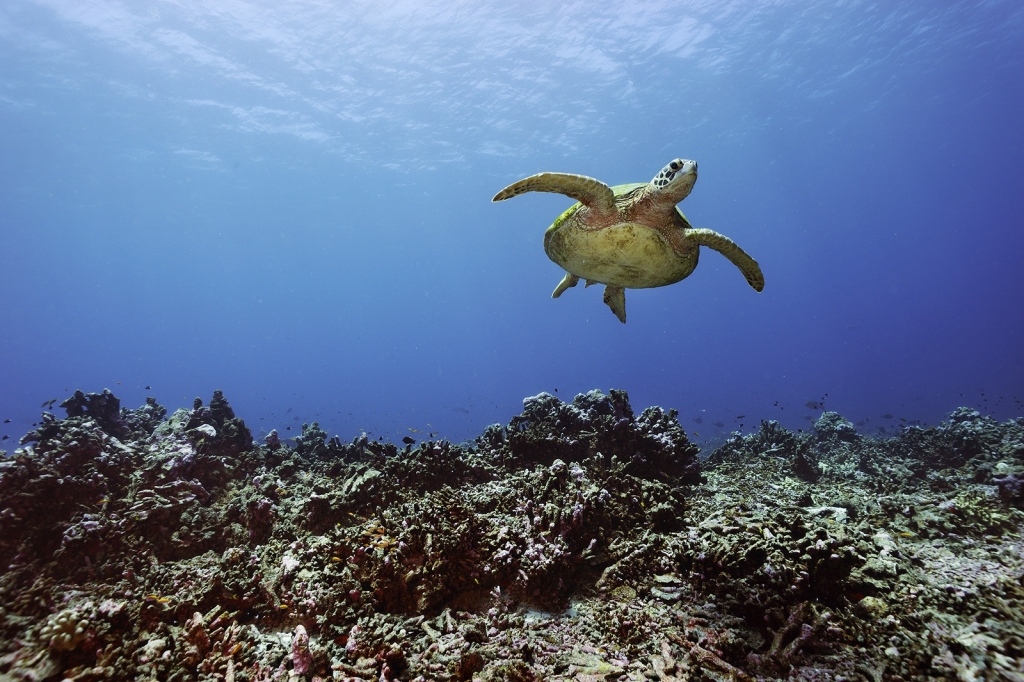Coral Bleaching and the Paris Summit
Blog Post by David Helvarg and Photo by Brian Skerry
Coral bleaching is happening now and globally! Bleaching, Acidification, Sea Level Rise, loss of sea ice…Climate is an ocean issue, which is why the Paris Climate Summit beginning Monday has to succeed. With the return of a strong El Niño in the Pacific Ocean and ever warmer seas, the National Oceanic and Atmospheric Administration has declared the third global coral bleaching event in history (the first two took place in 1998 during an earlier El Niño and in 2010 the hottest year on record until 2014 and now 2015). Coral bleaching is an indicator sign that the ocean is heating up. Overly warm water causes living coral polyps to expel the photosynthetic algae, called zooxanthellae that give them their varied colors and about 70% of their nutrients. If the bleaching lasts too long, the corals starve to death. After the 1998 bleaching 16% of the world’s corals were dead.
Ninety-five percent of U.S. corals, which are mostly concentrated off the coasts of Hawaii and Florida, are likely to be exposed to conditions that can cause bleaching in 2015 and 2016.
Tropical coral reefs cover less than 1% of the ocean, but they are home and nursery to 25% of all marine species; billions of fish, mollusks and other creatures rely on reefs for their food and shelter. Their wonder and beauty generates needed tourism dollars for many poor nations, and they act as natural barriers providing storm surge protection for many millions of coastal residents.
Unfortunately, they are especially fragile in the face of pollution, ocean acidification, overfishing and climate change. Most are not expected to survive this century.
There is some hope. Emerging science suggests coral reefs that are fully protected from pollution and overfishing are more resilient to the impact of climate change. That’s one reason a coalition of Hawaii-based groups is calling for an emergency moratorium on the collection of aquarium-trade fish off their reefs, part of a management plan the state is moving forward on.
At the same time, those who care about coral are looking at triage — not every reef will survive.
Wayne Levin, whose beautiful black and white underwater photographs can be found in the Museum of Modern Art in New York and the National Academy of Sciences in D.C. sent me an email from Hawaii:
“I just returned from a one-month trip to the mainland…. When I dove at Keauhou I was utterly shocked…. There was an enormous amount of bleached coral. At Honaunau it was even worse. Almost all the beautiful plate coral along the drop-offs was bleached. Yesterday I dove Ho’okena and all the cauliflower and antler coral was bleached. I was completely blown away…. When I left in mid-September all seemed fine. When I returned in mid-October complete devastation.”
Now six weeks later the bleaching continues to spread from Cuba to the Pacific and Levin continues to photo-document it.
With the U.N. Climate Summit beginning, our choices for the future are becoming as starkly black and white as Levin’s photographs of Hawaii’s bleached corals. We can commit to ending our oil addiction that is funding the terrorism we saw strike Paris only weeks ago as well as destroying our planet, or we can continue on the reckless path we’re now embarked on.
Hopefully in the next few days the world will begin the process of turning course away from global disaster and beginning to adopt that most basic of survival axioms: If you find yourself in a hole, stop digging.
To contact Co-Founder, Wendy Benchley, please email Wendy's Executive Assistant Mary Fritz, mary@wendybenchley.com
To contact Co-Founder, David Helvarg, please email, helvarg@bluefront.org



